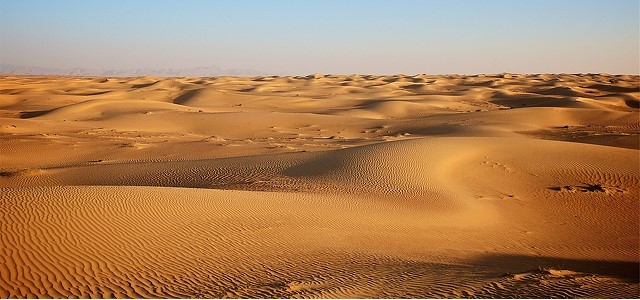Desert Ant Lion
Native to the Wastes, "Ant Lions" are actually not related to their harmless lacewing counterparts. Their shared name extends only to their method of hunting.
These massive ambush predators dig intricate funnels in the sand, lying in wait at the bottom. Prey that wanders too close slips and falls in the funnel, and into the monster's waiting jaws.
Ant Lions never "grow up"; their sandworm form is their adult form. Some legends say that ancient humans could tame these sand-dwelling titans, but for the most part, Humans see them as a threat, and Robots see them as an annoyance.
Basic Information
Anatomy
The Desert Ant Lion, despite sharing a name with the larvae of the Lacewing Damselfy, looks more like a worm or a centipede than the insect it's named for. They do possess a giant pair of mandibles, though, and several sets of large claws which they use to dig their sand pits. Their bodies are lined with small bumps (called papillae), which prevent sand from getting stuck on them. Follicles surround the creatures mouth and face, allowing it to feel subtle changes in its environment. Its eyes have all but atrophied, and are little more than light-detecting spots on the creature's head.
Genetics and Reproduction
Desert Antlions produce sexually, though it is unknown if they are hermaphrodites or not. They mate once a year during the dry season. After four months, female lays her eggs about six feet down from the surface, so that the sun can warm them. She then travels far from her brood, as not to eat them. The young are cannibalistic, and the ones that hatch and squirm away are the ones that make it to adulthood.
Growth Rate & Stages
Juveniles are self sufficient the moment they hatch, and can reach adult size in about 6 years. They can live up to a century if they are not hunted or attacked by another Antlion, though the general life expectancy is about 30 years.
Ecology and Habitats
Desert Antlions thrive exclusively in the Wastes. Their long bodies and shifting legs move easily through the sand, and they can set up perfect traps for their prey. They are semi-nomadic; moving to other areas and digging a new pit every several months, or even years. These old pits are covered up quickly by the shifting sand, as the Antlion is no longer there to maintain its lair.
Dietary Needs and Habits
Desert Antlions are ambush hunters; they spend much of their time completely still, and might go for months without a meal. They store their meals as a fatty pouch on their underside.
Prey is anything and everything organic; gazelles, javelina, camels, wild dogs, humans, and kangaroo are just a few of the prey items they eat regularly. They will attempt to swallow robots, but more often than not find them unpalatable.
Additional Information
Social Structure
Desert antlions are solitary, meeting only to mate. If they encounter one another in the wild and it isn't mating season, they will typically fight to the death.
Facial characteristics
The antlion has three eyes on its head, arranged in a triangle pattern, as well as "whiskers", that act as follicles and help it detect movement as it digs through the sand.
The antlion's giant serrated mandibles are its defining feature, and one strike can snap bone.
Geographic Origin and Distribution
Exclusively Desert-Dwelling
Average Intelligence
Non-sentient; though it can discern what is edible and what is not, it has a one-track mind, and runs mostly on instinct, with predictable behavioral patterns.
Perception and Sensory Capabilities
Antlions are particularly sensitive to sound and touch. They can feel slight movements in the loose sand of the desert, and can tunnel through it easily. The creatures have poor eyesight, as they don't need any input from the glaring desert sun.
Scientific Name
Giant Worm, Scientific name: Annelida eremus
Origin/Ancestry
Sandworms, Velvet Worms(?)
Lifespan
30 years (though larger ones can live up to 100)
Average Weight
600kg
Average Length
6 meters
Body Tint, Colouring and Marking
Tan, dark red, dark brown, and white (white is more common in the Northern Wastes)
Remove these ads. Join the Worldbuilders Guild









Comments